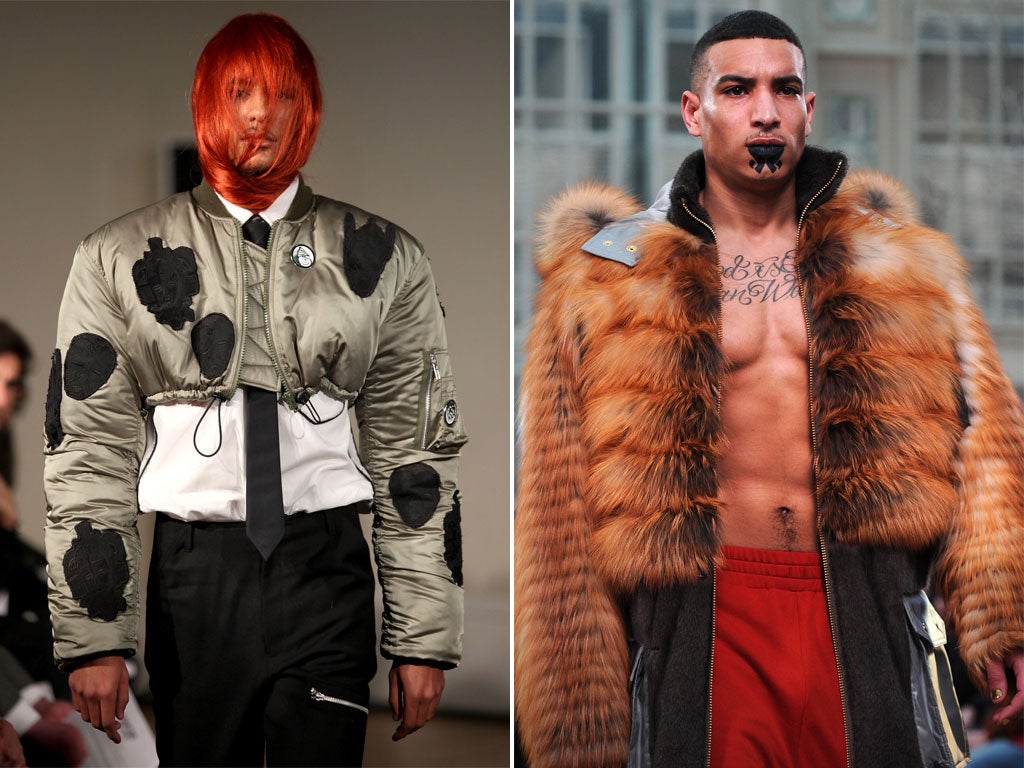Menswear finds its swagger to escape role as poor relation of British fashion

Your support helps us to tell the story
From reproductive rights to climate change to Big Tech, The Independent is on the ground when the story is developing. Whether it's investigating the financials of Elon Musk's pro-Trump PAC or producing our latest documentary, 'The A Word', which shines a light on the American women fighting for reproductive rights, we know how important it is to parse out the facts from the messaging.
At such a critical moment in US history, we need reporters on the ground. Your donation allows us to keep sending journalists to speak to both sides of the story.
The Independent is trusted by Americans across the entire political spectrum. And unlike many other quality news outlets, we choose not to lock Americans out of our reporting and analysis with paywalls. We believe quality journalism should be available to everyone, paid for by those who can afford it.
Your support makes all the difference.Menswear is typically considered the poor relation to its feminine counterpart in the fashion world, and nowhere is this poor-relation status more evident than at London Fashion Week, where a day of menswear is usually tacked on to the end of five days of womenswear shows. However, yesterday's enactment of this tradition should mark the end of this plight, as the boys are due to break free with a dedicated three-day event in June.
The British Fashion Council launched a committee last month to raise the profile of UK menswear designers and avert a brain drain of talent overseas. Now Dylan Jones, editor of British GQ, who has spearheaded the British Fashion Council's menswear campaign, has revealed details of the event. "Menswear is something we're exceptionally good at. It's an intrinsic part of our heritage and history," he said, hailing the chance to "shout loud and clear about how we lead the world in this respect". A reception will be hosted by the Prince of Wales at St James Palace to launch the London Menswear Collections in June.
It is hoped that the shows will become part of the round of menswear collections that attract buyers and the international press to Milan, Florence, Paris and New York. In a canny move, the London collections will be the first in the schedule, ensuring that buyers will have plenty in their budgets to make orders for the pieces they see.
Meanwhile, an impressive roster of designers showed yesterday at London Fashion Week, opening with JW Anderson. His collection, shown in the old Central Saint Martins building in Holborn, was an extension of his womenswear collections. Optical graphic prints appeared on kick flare cropped trousers, while padding and quilting bulked up jackets, apron skirts and document cases. More wearable pieces included grid knit roll-neck jumpers and hole punched neoprene bomber jackets. A red and blue cockerel motif appeared in large form on a sweater and as a conversational print on a head-to-toe look.
Martine Rose's military inspired collection pioneered bomber and flight jackets in khaki and orange. And Savile Row tailor Gieves & Hawkes presented a static collection exploring a classic formalwear palette of charcoal, navy and camel.
At Topman Design, the front row was inhabited by Ronnie Wood, Amir Kahn, menswear committee member David Gandy and Harold Tillman, chairman of the British Fashion Council. The high-end collection from the high street giant was a dark and strict affair with sharp, double-breasted tailoring in wool, leather and pony skin. Studded belts and PVC pieces added a fetish vibe, while graphic floral print shirts barely softened a severe, yet wearable collection.
Patrick Grant, creative director of E Tautz, explained that his latest collection was inspired by a recent Richard Serra exhibition at the Met, at which he was drawn to vast, dense, absorbent forms.
The largely grey collection focused on heavy British cloths invented to stand against British weather, while the micro-houndstooth and gingham checked wools reflected Grant's keen interest in engineering. Flashes of scarlet evoked the dress uniforms of soldiers on parade.
Oliver Spencer finished the show with a signature collection, featuring a neutral colour palette of khaki, grey, navy and tones of brown.
Join our commenting forum
Join thought-provoking conversations, follow other Independent readers and see their replies
Comments